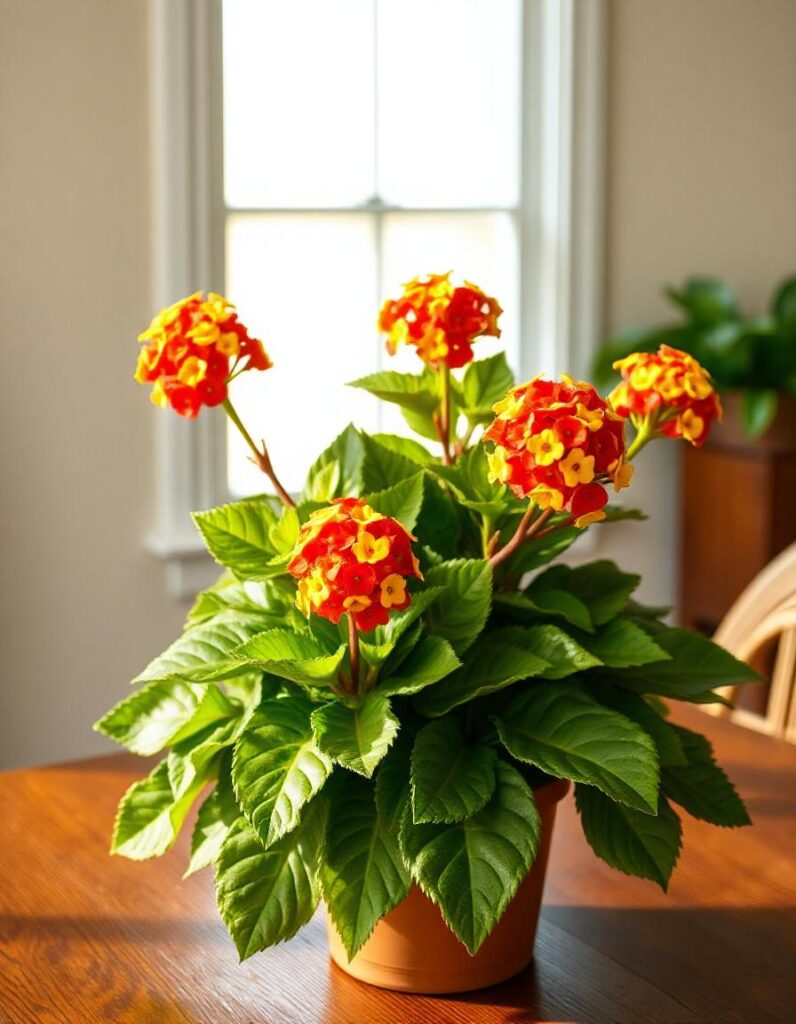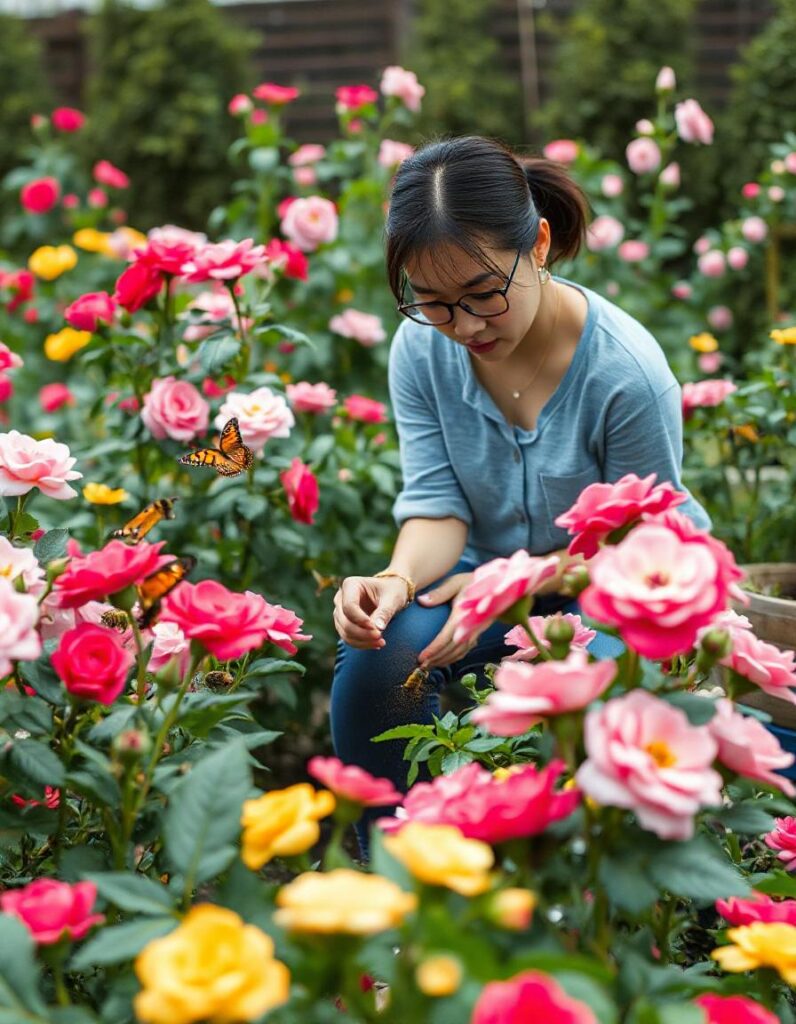A Comprehensive Guide to Growing, Care, and Benefits
The Kalanchoe plant is a popular succulent known for its vibrant flowers, ease of care, and ability to thrive indoors. Whether you’re a seasoned gardener or a beginner, Kalanchoe can add beauty and color to your home. This article provides a comprehensive guide to Kalanchoe, covering everything from its history and varieties to tips on growing and care, as well as its potential benefits.
Table of Contents

1. Introduction to Kalanchoe
Kalanchoe is a genus of about 200 species of succulent plants in the Crassulaceae family. These plants are native to Madagascar and other tropical regions of Africa. Kalanchoe is known for its thick, fleshy leaves, which store water, making it drought-resistant and ideal for low-maintenance gardening.
The most well-known species is Kalanchoe blossfeldiana, recognized for its bright, long-lasting flowers in various colors, including red, pink, orange, and yellow. Other popular species include Kalanchoe tomentosa (Panda Plant), Kalanchoe daigremontiana (Mother of Thousands), and Kalanchoe pinnata (Cathedral Bells).
2. Types of Kalanchoe Plants
Here are some of the most popular types of Kalanchoe plants:
- Kalanchoe Blossfeldiana: Known for its vibrant, clustered flowers, this species is often grown as a houseplant.
- Kalanchoe Tomentosa (Panda Plant): Characterized by its fuzzy, grayish-green leaves with brown tips, this plant is great for adding texture to your garden.
- Kalanchoe Daigremontiana (Mother of Thousands): This unique species produces small plantlets along the edges of its leaves, which eventually drop and grow into new plants.
- Kalanchoe Pinnata (Cathedral Bells): With large, bell-shaped flowers, this species is popular in tropical gardens.
3. Growing Kalanchoe: A Step-by-Step Guide
Growing Kalanchoe is relatively simple, even for beginners. Here’s a detailed guide to help you cultivate a healthy plant:
a. Light Requirements
Kalanchoe thrives in bright, indirect sunlight. Place your plant near a sunny window, where it can receive at least 4-6 hours of light per day. Avoid direct sunlight, especially in the afternoon, as it can scorch the leaves.
b. Watering
As a succulent, Kalanchoe stores water in its leaves, so it doesn’t require frequent watering. Allow the soil to dry out completely between waterings. Water deeply, then let the excess water drain out of the pot. Overwatering can lead to root rot, a common problem with succulents.
c. Soil and Potting
Use a well-draining succulent or cactus mix for Kalanchoe. Ensure your pot has drainage holes to prevent water from accumulating at the bottom. If repotting, choose a pot slightly larger than the current one, and refresh the soil every 1-2 years.
d. Temperature and Humidity
Kalanchoe prefers temperatures between 60-85°F (16-29°C). It’s important to keep the plant away from drafts or sudden temperature changes, as this can cause stress. Kalanchoe can tolerate low humidity, making it perfect for indoor environments.
e. Fertilizing
During the growing season (spring and summer), feed your Kalanchoe with a balanced liquid fertilizer diluted to half strength every 2-4 weeks. Reduce or stop fertilizing in the fall and winter when the plant is dormant.
4. Kalanchoe Care Tips
To keep your Kalanchoe healthy and vibrant, follow these essential care tips:
- Pruning: After flowering, prune spent blooms to encourage new growth and keep the plant looking tidy. Trim leggy stems to maintain a compact shape.
- Pest Control: Kalanchoe is generally resistant to pests, but mealybugs and aphids can sometimes be an issue. Use insecticidal soap or neem oil to treat infestations.
- Repotting: If your Kalanchoe outgrows its pot, repot it in fresh soil to give it room to grow. Spring is the best time for repotting.
5. Common Problems and Solutions
Despite being low-maintenance, Kalanchoe can face some issues. Here’s how to address common problems:
- Yellowing Leaves: This can be a sign of overwatering. Ensure the soil dries out between waterings and that the pot has proper drainage.
- Leggy Growth: If your plant is stretching and becoming leggy, it may not be receiving enough light. Move it to a brighter location.
- Drooping or Soft Leaves: This could indicate that the plant is too cold or overwatered. Adjust the temperature or watering schedule accordingly.
6. Benefits of Kalanchoe
Beyond its beauty, Kalanchoe offers several benefits:
- Air Purification: Like many succulents, Kalanchoe helps improve indoor air quality by absorbing carbon dioxide and releasing oxygen, especially at night.
- Aesthetic Appeal: With its colorful flowers and unique foliage, Kalanchoe adds aesthetic value to homes and offices, making it a popular choice for interior decoration.
- Low Maintenance: Kalanchoe is easy to care for, making it a great option for busy individuals or those new to gardening.
- Medicinal Uses: Some species of Kalanchoe, such as Kalanchoe pinnata, have been used in traditional medicine for their anti-inflammatory and wound-healing properties. However, always consult a healthcare professional before using plants for medicinal purposes.
7. Propagation of Kalanchoe
Kalanchoe is easy to propagate, making it a favorite among plant enthusiasts. You can propagate Kalanchoe using cuttings, leaves, or offsets. Here’s how:
- Stem Cuttings: Take a healthy stem cutting and allow it to dry for a few days to form a callus. Plant the cutting in well-draining soil and water lightly until it establishes roots.
- Leaf Propagation: Gently remove a leaf from the plant and let it dry for a day or two. Place the leaf on top of the soil and water sparingly. New plantlets will begin to form at the base of the leaf.
- Offsets: Some Kalanchoe species produce offsets or “pups” at the base of the parent plant. Simply separate these and plant them in their own pots.
8. Kalanchoe in Feng Shui
In Feng Shui, Kalanchoe is believed to bring positive energy and good fortune. Its bright flowers and robust growth symbolize vitality and prosperity. Placing a Kalanchoe plant in your home or office is thought to attract wealth and happiness, making it a popular choice for those who follow this ancient practice.
9. Conclusion
The Kalanchoe plant is a versatile and beautiful addition to any home or garden. With its low-maintenance care requirements, stunning flowers, and potential health benefits, it’s no wonder that Kalanchoe has become a favorite among plant lovers. By following the tips in this guide, you can enjoy the beauty and benefits of Kalanchoe year-round.
Whether you’re looking to add a splash of color to your home or seek a hardy, easy-to-care-for plant, Kalanchoe is a perfect choice.
